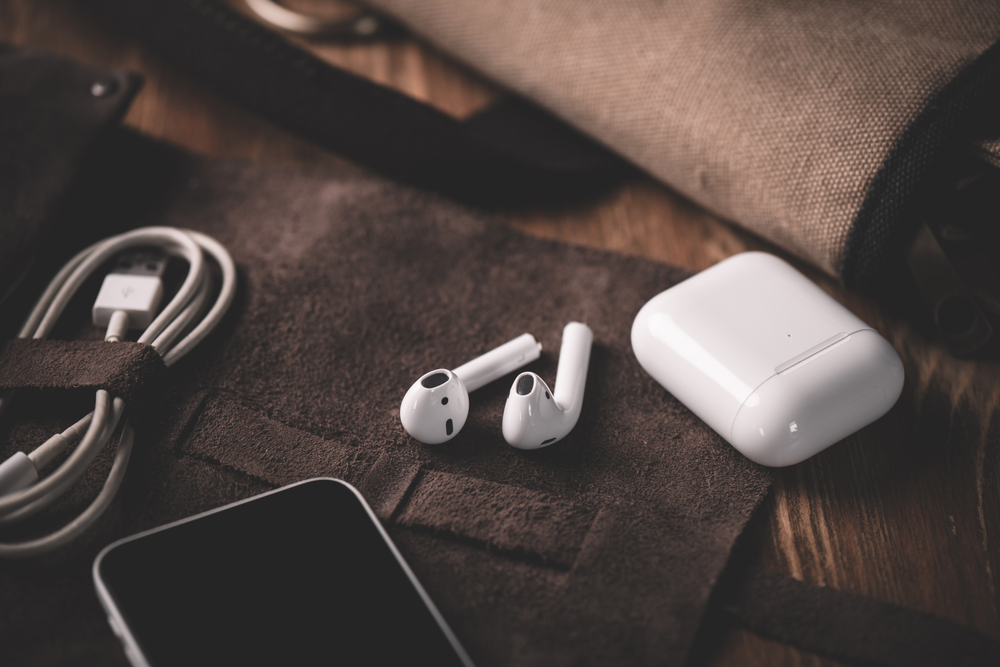In recent years, technology has rapidly advanced, transforming how we communicate and interact with the world around us. One of the most exciting developments is the emergence of wireless earbuds, which have not only become popular for music lovers but are also paving the way for innovations in hearing aids and assistive technologies. By integrating advanced features, these devices offer improved accessibility and a better listening experience for those with hearing difficulties. This blog post will explore how wireless earbuds are revolutionizing hearing aids and assistive technologies, highlighting their benefits, features, and future potential.
1. The Evolution of Hearing Aids
From Bulky Devices to Sleek Innovations
Hearing aids have come a long way since their inception. Initially, these devices were bulky and cumbersome, often leading to stigma and discomfort for users. However, advancements in technology have allowed for the development of smaller, more discreet devices that are easier to wear. With the introduction of digital signal processing, modern hearing aids can adapt to different sound environments, providing users with improved clarity and sound quality.
Despite these advancements, traditional hearing aids still have limitations. Many users struggle with connectivity issues and find it challenging to integrate their devices into their everyday lives. This is where wireless earbuds come into play. Their sleek design and versatility make them an attractive alternative for individuals seeking a more comfortable and efficient listening experience.
The Rise of Wireless Earbuds
Wireless earbuds have gained immense popularity over the past few years, primarily due to their convenience and portability. As consumers demand better sound quality and functionality, manufacturers have responded by integrating advanced features, such as noise cancellation, touch controls, and voice assistance. These capabilities not only enhance the listening experience for music and podcasts but also offer unique advantages for individuals with hearing impairments.
By leveraging the technology behind wireless earbuds, developers can create innovative solutions that address the specific needs of hearing aid users. This shift represents a significant step forward in making assistive technologies more accessible and user-friendly.
2. Enhanced Sound Quality and Clarity
Superior Audio Processing
One of the most significant benefits of wireless earbuds is their ability to deliver high-quality audio. Many models feature advanced audio processing technology that enhances sound clarity and fidelity. This is particularly beneficial for individuals with hearing loss, as clearer sound can make it easier to understand speech and differentiate between different sounds.
Wireless earbuds often come equipped with multiple sound profiles, allowing users to customize their listening experience based on their preferences and hearing needs. This level of personalization can be invaluable for individuals who require specific adjustments to enhance their auditory experience.
Noise Cancellation and Ambient Sound Features
In addition to superior sound quality, many wireless earbuds offer noise-cancellation features that help block out background noise. This technology can significantly improve the listening experience for users in noisy environments, such as public transportation or crowded events. By reducing distractions, users can focus on conversations or music without straining to hear.
Furthermore, some wireless earbuds come with ambient sound features, allowing users to hear external sounds while still enjoying their audio. This can be particularly beneficial for individuals who need to remain aware of their surroundings, such as those with hearing impairments who want to engage in conversations without removing their earbuds.
3. Accessibility and Integration with Assistive Technologies
Seamless Connectivity with Smartphones
Wireless earbuds are designed to seamlessly connect with smartphones and other devices via Bluetooth technology. This ease of connectivity is a game changer for individuals with hearing impairments, as it allows them to easily pair their earbuds with hearing aid apps and other assistive technologies. This integration enhances the overall user experience by providing quick access to customizable sound settings and other features.
Additionally, many hearing aid manufacturers have developed apps that allow users to control their devices from their smartphones. By connecting their wireless earbuds to these apps, users can adjust their hearing settings, monitor battery life, and access other features with ease. This level of convenience makes it easier for individuals with hearing impairments to manage their devices and improve their overall quality of life.
Compatibility with Voice Assistants
Another innovative aspect of wireless earbuds is their compatibility with voice assistants like Siri, Google Assistant, and Alexa. This feature provides hands-free control, allowing users to make phone calls, send messages, and access information without needing to interact with their smartphones directly. For individuals with hearing impairments, this functionality can enhance communication and accessibility, making it easier to navigate daily tasks.
Voice assistants can also help users access important information, such as weather updates or appointment reminders, without needing to look at their devices. This hands-free functionality makes it easier for users to stay connected and informed, ultimately improving their daily lives.
4. Affordability and Accessibility
The Cost Factor: Earbuds Price in Pakistan
While traditional hearing aids can be expensive, wireless earbuds present a more affordable option for many individuals. The earbuds price in Pakistan varies significantly depending on the brand and features, making them accessible to a broader audience. Users can find budget-friendly options without sacrificing sound quality or functionality.
This affordability is essential for those who may not have access to traditional hearing aids due to high costs. By providing an alternative solution, wireless earbuds can help bridge the gap and ensure that individuals with hearing impairments can access the tools they need to improve their quality of life.
Breaking Down Barriers
The rise of wireless earbuds also represents a shift in how society views assistive technologies. As these devices become more mainstream, they help reduce the stigma associated with hearing aids. Wireless earbuds are often viewed as trendy accessories rather than medical devices, making them more appealing to younger users who may be reluctant to wear traditional hearing aids.
This change in perception can encourage individuals with hearing impairments to seek the support they need without feeling self-conscious. By embracing technology that integrates seamlessly into their lives, users can enhance their listening experiences and enjoy greater independence.
5. Future Potential: Innovations on the Horizon
Emerging Technologies in Hearing Assistance
As wireless earbuds continue to evolve, the potential for innovation in hearing assistance technologies is vast. Manufacturers are exploring the integration of artificial intelligence (AI) and machine learning to enhance the functionality of earbuds further. These advancements could lead to more personalized audio experiences that adapt to users’ specific hearing needs in real time.
For instance, AI could analyze the user’s environment and automatically adjust the audio settings to optimize sound clarity. This level of personalization would provide users with an unparalleled listening experience, making it easier for those with hearing impairments to engage with their surroundings.
The Role of Research and Development
Ongoing research and development in the field of assistive technologies will play a crucial role in shaping the future of wireless earbuds. By collaborating with audiologists and hearing specialists, manufacturers can gain insights into the unique needs of individuals with hearing impairments. This collaborative approach will help ensure that future innovations effectively address these needs and provide users with the tools they require for better hearing.
Moreover, as the demand for affordable and accessible hearing solutions continues to grow, manufacturers will be motivated to invest in research and development efforts that prioritize user experience and functionality. This focus will ultimately lead to the creation of advanced hearing assistance technologies that improve the lives of countless individuals.
6. Conclusion: A Brighter Future for Hearing Assistance
Wireless earbuds are revolutionizing the landscape of hearing aids and assistive technologies. Their advanced features, affordability, and seamless integration with smartphones and voice assistants make them an appealing alternative for individuals with hearing impairments. As technology continues to advance, the potential for wireless earbuds to enhance accessibility and improve the listening experience for users is vast.
By bridging the gap between traditional hearing aids and modern audio devices, wireless earbuds empower individuals to take control of their hearing experiences. With continued innovation and a commitment to improving accessibility, the future looks bright for those seeking effective solutions for hearing assistance.
As you consider your options, keep in mind the earbuds price in Pakistan and the features that matter most to you. Embracing these technological advancements can significantly enhance your quality of life and help you stay connected to the world around you.




